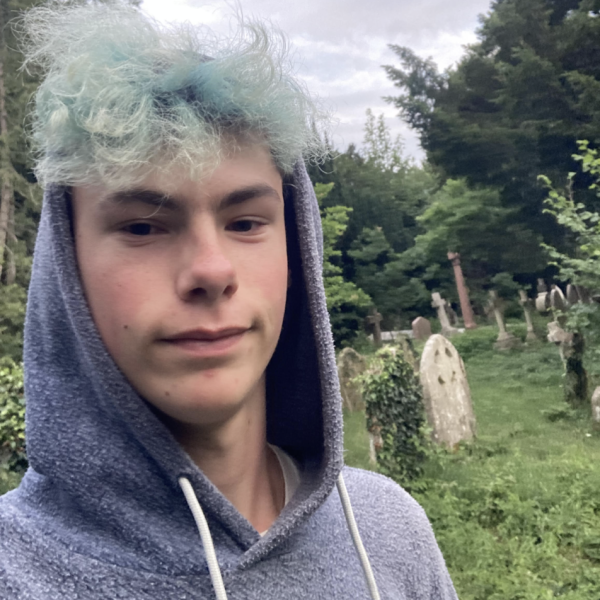With a history of protests and social justice movements taking place within the school over the century it has been open, Tamalpais High School has a well-known reputation as a progressive institution.
Tam has come under fire for a number of incidents that reflect bigotry such as students saying the N-word, and racism within the community. Though Tam boasts a history of social justice, protests against racism, and numerous student unions supporting marginalized groups, these incidents challenge the image Tam attempts to present, and serve as a reminder that most instances of social change at Tam are propelled by inequities.
After recent racist incidents, it’s fair to wonder whether the Tam community is actually moving towards equality as a community and a student body, or if the school’s progressive reputation will continue to be inhibited by ignorance and prejudice.
Injustices at Tam
Tam has been historically commended in local publications such as this article from the Marin IJ for its involvement in movements of social change, such as Breakthrough Days. In 1967, after racial tension broke out on campus, Tam held a day for social change, known as Breakthrough Day or Operation Breakthrough, in the hopes of promoting racial equality within the community.
However, recent incidents on campus such as white students saying the N-word and even drawing slurs and swastikas on the face of another student have caused questions within the community about how progressive Tam really is.
At the beginning of the 2023-24 school year, a video depicting white students saying the n-word in a joking manner was shared throughout the community. This event prompted students and administrators to reevaluate the way racism was addressed on campus, and what could be done to prevent similar incidents from occurring in the future. In order to address these issues, walkouts protesting white students saying the N-word were organized, and “Stop-and-Learns” were implemented by the district to help educate students on racism at Tam.
“As part of BSU (Black Student Union), we have observed a lot of hate towards us because we are students of color,” BSU member and Tam student Dontae Seymore said, “It’s not directed at us individually, necessarily, but more at our community as Black people. A lot of times students at Tam don’t realize that words, like the n-word, or things they do like the graffiti we see and the video that went around and other situations are not just words or writing. I have heard that excuse before. It’s defying how far Black people have come in history.”
The video spurred ongoing protests from Tam students, including a walk-out in October 2023 that was led and organized by BSU. Tam students marched from the front of campus down Miller Avenue to the front of the Mill Valley Town Hall, chanting phrases such as, “You love Black culture but you don’t love us,” and “Black Lives Matter.”
“People love Black culture; rap music, how we dress, how we party, but when it comes to how far we have come in life it is always pushed back and looked at differently. [The accomplishments of Black people are] seen as a joke,” Seymore said. “[The Black community at Tam] constantly has to speak up for ourselves.”
Christopher Oharahay, a sophomore at Tam and a member of Tam’s Gender and Sexuality Alliance (GSA), said that, despite the success of the club in promoting acceptance and knowledge about the LGBTQ+ community, there remains a culture of ignorance at Tam.
“I think in comparison to other schools, we’re doing a lot better, because I know a lot of schools around the country, even in California, can’t even have a GSA due to homophobia and transphobia,” Oharahay said. “I’m very grateful that the school facilitates [GSA], but also at the same time, there is a lot of, I think, underlying prejudice. I hear people just throwing around phrases and saying the F-slur and just stuff that isn’t maybe inherently homophobic but just kind of creates that environment where [homophobia] can happen.”
Oharahay attributed much of the homophobia and transphobia at Tam to the social culture built by the students, remarking that students rarely use offensive phrases around teachers, which allows homophobia to go largely unnoticed within the community.
The GSA at Tam is working on combating homophobia and transphobia, building a “safe space for people at Tam to feel like they can be themselves,” Oharahay said. This month, the GSA is accomplishing this by posting accomplishments and history from the LGBTQ+ community on the Tutorial slideshow.
At present, Tam’s GSA is focusing on promoting the history of the LGBTQ+ community leading up to and during Pride Month. More information and events officiated by Tam’s GSA can be found on Instagram (@tamhighgsa).
Tam’s History of Prejudice
Arguably the most notable, but certainly not the only, example of a progressive student movement at Tam took place in 1967. After what a New York Times article described as “racial tensions [that] threatened further outbreaks on the campus,” many of Tam’s students of color led an effort to reserve the day of Feb. 27 for schoolwide discussions on race relations, which was known as Breakthrough Day. The event was considered a strong success and received attention from both local and national media.
However, Breakthrough Day has seemingly been relegated to a mere footnote in the school’s history.
“I think the school does a good job of making sure that students are informed, but I’m not necessarily sure that it does a good job of talking about the school’s past,” Tam senior Sadie Scholl said. “I definitely think that should be brought up more in conversations that we have about race, about privilege, and about culture, which is stuff that I haven’t really seen around the school.”
“I don’t really know anything about Tam’s history of activism. I didn’t know that we had one. I guess the school doesn’t teach us much about it,” Tam senior Ruby Roth said, echoing this sentiment.
However, Tam’s history of progressive change has been considered controversial to some.
“I’ll be interested to know how many conservative parents make angry phone calls to the principal’s office in the next couple of days,” an unidentified Tam faculty member told The New York Times in the 1967 article about Breakthrough Day.
Despite how positively it reflects on Tam today to be one of the schools to quickly change the insensitive mascot from the “Indians” to the “Red-Tailed Hawks” in 1989, many community members openly opposed the change at the time.

Tam alumni George Cagwin, who graduated in 1956, told SFGATE, “I feel like there has been a death in the family,” after the mascot change.
Similarly, a school program created in 1990 providing free condoms was shot down almost immediately after its creation due to community backlash led by San Francisco Archbishop John Quinn, who said that the initiative “should be reviewed and rescinded,” according to The Mercury News.
Not all community members opposed the changes occurring at Tam, but Marin high schools did seem to have a less comprehensive understanding of social issues than they do today, as noted by Tam teacher Abbey Levine.
Levine recalls a significantly lower level of awareness regarding social justice issues when she attended Terra Linda High School in the 1990s.
“One of my best friends came out to me as gay in high school, and I don’t believe there was a lot of support. I don’t remember any kind of GSA. I don’t remember any of that,” Levine said.
Levine attributed most of this ignorance to a lack of education regarding societal inequities. She said that social change and equality wasn’t a mainstream concept while she was in high school.
“I do remember we had an Associated Student Body (ASB) president the year before I was a senior, when I was a junior, and he spent the summer with the Amigos program in South America, and he went into our English Language Learner classes at the time and recruited those students to elevate their voices in our school leadership programs, and I remember feeling like […] the thought hadn’t even crossed my mind,” Levine said.
Less than a decade earlier than Levine’s attendance at Terra Linda High School, Tamalpais High School was still championing the “Indians” as their mascot. Tam’s history of progressivism is closely linked with a history of inequality as well as bigoted actions by students. This has resulted in a culture that highlights both the actions of students as well as the associations pushing for awareness and amplifying marginalized voices.
Many students wish the school paid a larger homage to the people and movements that make the Tam community what it is today.
“I think [Tam] should teach us more about what was going on at the school during the AIDS crisis. Our school was super good about certain things during [the crisis], and everyone should know about that,” Tam senior Oli Roth said.
That “certain thing” was a groundbreaking student-led initiative for school-provided free condoms in 1990, which led The Los Angeles Times to write an article about how “students at Tamalpais High School persuaded a panel of teachers, parents and school officials to provide the free condoms through the school nurse along with a mandatory course teaching them how to use them to prevent diseases.”
Even though the program was nearly unanimously approved by Tam’s parent-student association, it received significant pushback for the fact that any student could take part regardless of parental permission, partly due to its public condemnation by Archbishop Quinn.
Despite the setback, the initiative led to the creation of a similar program requiring parental permission later that year.
Inequalities on Campus
Walking through the halls of Tam, it’s abundantly clear that the school has a lack of diversity in comparison to other Marin high schools. For example, according to The California Department of Education Tam has 44% less Hispanic students than the average statewide as well as 48% more White students than the state average. Also in comparison to nine other Marin high schools, Tam ranks third-to-last in percentage of minority students, according to statistics that can be found on US News.
Time and time again, students of color are subjected to racism on Tam’s campus through microaggressions, racist humor, and slurs, such as a November 2023 incident where the n-word was found carved into a railing in Tam’s student center. Still, the school’s classrooms and hallways preach an inclusive environment.
Student organizations such as the BSU and ASB at Tam try to promote a progressive culture to students; however, many students of color still feel marginalized and excluded from the culture that Tam fosters.
“[Fitting in at Tam as a Black student] is possible, but it’s also definitely a challenge as well because Tam is a predominantly white school. It definitely takes some time to get adjusted to the Tam culture,” BSU co-president Auvin Cole said.
Outside of student organizations and clubs, there are few places for students of color to routinely congregate and discuss the issues they face at Tam, Cole said.
Tam’s BSU shares a slideshow every Tutorial period where it alerts students of important dates and events relating to Black history coming up in the community. More information about BSU at Tam can be found on Instagram (@tamhighbsu).
Over the past school year, Tam administration has also worked with the student-led ASB class to create events and representation content that is promoted throughout the school. These efforts culminated in a May 21 webinar with Professor Ibram X. Kendi, which was partially led by BSU co-president Cole and shown in classrooms in all Tamalpais Unified High School District (TUHSD) schools.
In addition, the Tam Parent Teacher Student Association (PTSA) led “Diversity Day” was held on Saturday, April 29, and aimed to shed light on Tam’s diversity representation and celebrate the different backgrounds of the school’s student body.
Despite these efforts, many students feel underrepresented and underappreciated at Tam, even in the wake of events promoting equality. While students struggle to fit into the white majority at Tam, some also struggle inside the classroom due to little to no accommodations made for non-binary and transgender students.
Tam’s physical education class teaches a swim unit every year to freshmen and sophomores. Students have expressed discomfort pertaining to the changing situation before and after the swimming lessons, especially students who do not fit into the traditional gender binary. One student has allegedly asked the administration to aid their discomfort in their freshman year, but many times their requests go ignored or unfulfilled.
“Tam failed to provide a gender-neutral bathroom for me to change in last year [during our swim unit] and failed to take ownership. They confided in me but ended up not changing their behaviors and still not unlocking the bathrooms, which comes across as disingenuous,” an anonymous student who has since transferred away from Tam due to these issues said.
“I think that Tam fails to provide an accepting place for students,” the anonymous student said. “When I told the school that people were calling me slurs, they didn’t take any action to prevent this from happening again.”
Tam students who are members of the BIPOC and/or LGBTQ+ communities, such as Seymore and Nielle Thomas, have also said that they feel like not enough action was taken by the administration to combat the hate directed at their community.
“As a sophomore, I’ve had so many microaggressions happen to me. I report them to the school and to teachers and the principal and still nothing happens,” Thomas said.
“We constantly have to speak up for ourselves and it puts us in a position where we are doing more than admin is. White students usually are not getting proper punishments, and when they do get punished, the school never tells us. It is usually a second party or friend that does,” Seymore said.
This year, TUHSD implemented “Stop and Learn” events targeted towards educating students on racial equality and respect, which included training on how to handle acts of racism around campus such as microaggressions and hate speech, as well as an “Affinity Space” for students of color to collectively share their experiences at Tam. These training sessions were received with various degrees of reported success.
“I feel like Tam should do the ‘Stop and Learn’ training all together,” Tam senior Cole Lundgren said in response to attending a Stop-and-Learn. “When you teach a different curriculum between the white students and the Black students, I feel it can create a feeling of division between our school. We should all come together in the same place and learn as a school to build community.”
Though teachers participate in school-mandated training, some are still left in the dark regarding how their students are feeling, especially when it comes to preventing these incidents outside of the classroom.
“I think it’s really hard for teachers to get a sense of [the social climate] because incidents mostly happen on social media and outside of the classroom,” teacher Robert Hill said. Hill taught last year at Tam but was transferred to Redwood shortly before the beginning of the school year.
Moving forwards at Tam
While the school has made strides towards equality for all students within the Tam community, there are still steps to take in order for all students to feel respected.
Social and Environmental Justice and Action (SEJA) advisor, football coach, and history teacher Matthew LemMon is focusing on communication in the wake of racist incidents that occurred earlier in the school year.
“A lot of the stuff we’ve been doing this whole year with most of the kids in [SEJA] is talking through it and restoring some of that trust, which has been difficult,” LemMon said. “I think we also have a large collection of the individuals that are harmed by these things that are in SEJA, and so giving them a space to feel comfortable to say the things they want to say to everyone, to that group of people, has been good.”
Tam aims to educate students on racism, according to the email memo sent out in preparation for the Kendi webinar, whether it’s through “Stop and Learns”, class discussions, or the introduction of new courses to the curriculum, such as AP African American History and the soon-to-be-implemented Ethnic Studies requirement by the state of California.
“I think when you have school leaders who see it as their job to make sure that every kid in our school — regardless of what they look like, the color of their skin, their language, the religion they practice — [deserves to have] a quality education, and they put money and resources behind supporting those efforts, I think we’ll move in the right direction,” Levine said.











Loren Mollner ♦ Oct 14, 2024 at 10:33 am
Interesting how Tam celebrates a religious holiday be simply claim it to be a school vacation day instead of calling it a Jewish holy day. Then they completely ignore a Federal holiday that originated in the 1930’s.
There are indigenous people at Tam that apparently don’t count as much as some religious groups. Tam would even change football games that occurred on this holy day.
Thanks for your reporting.